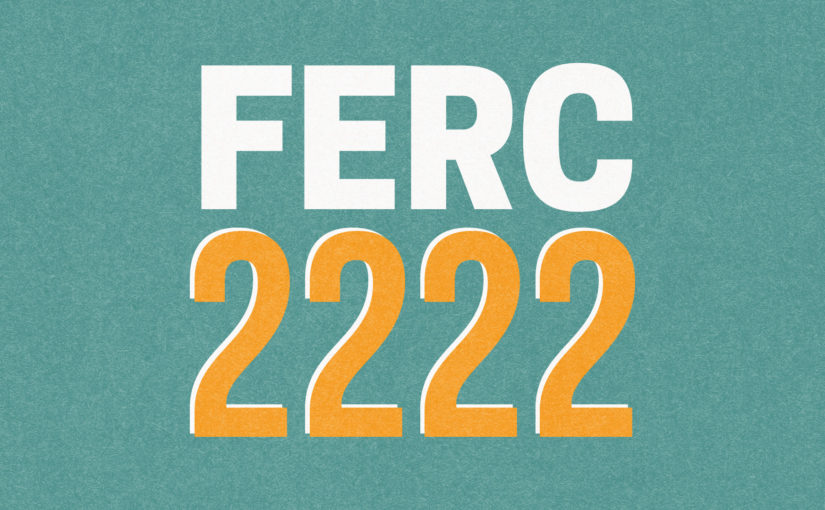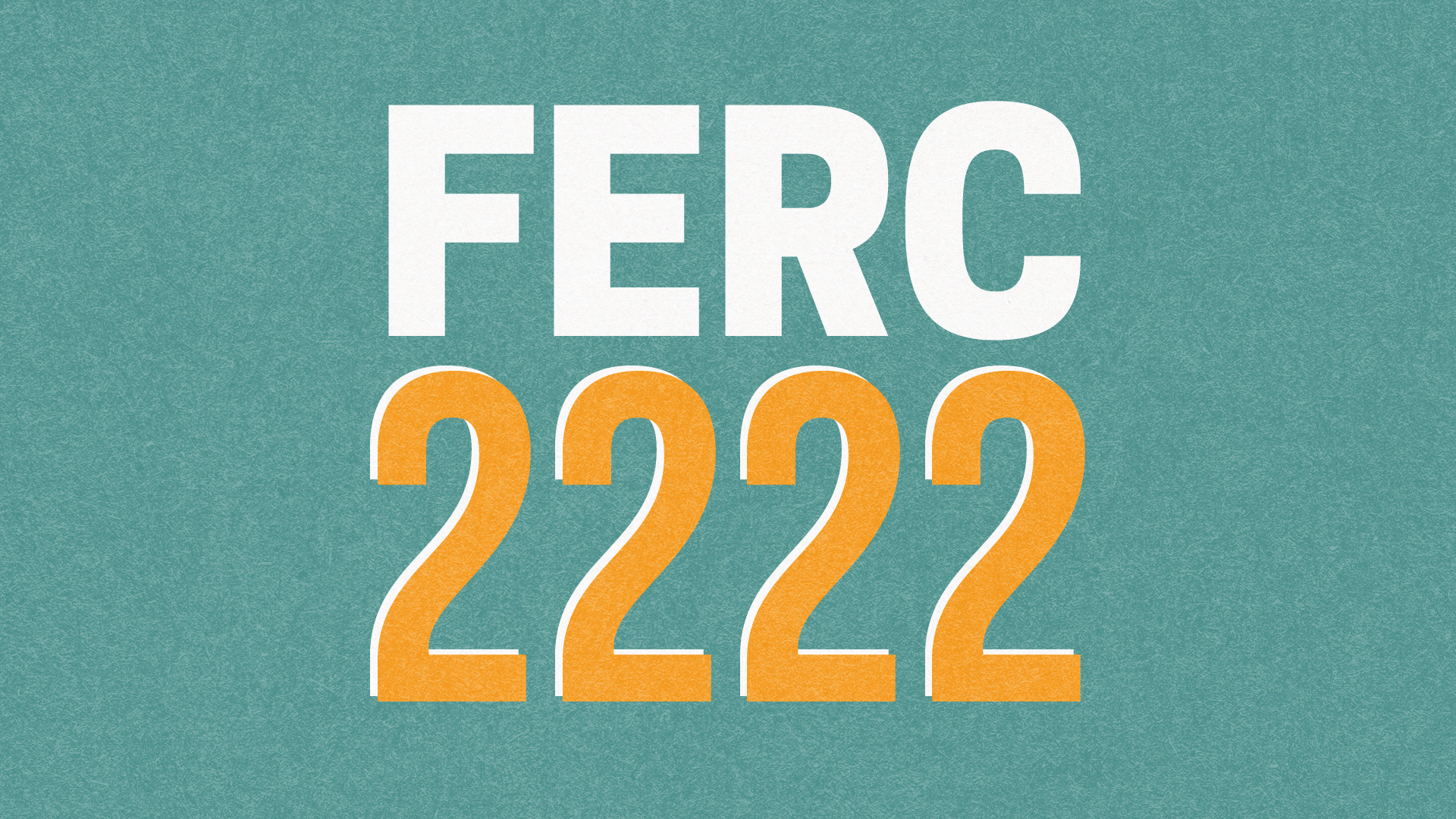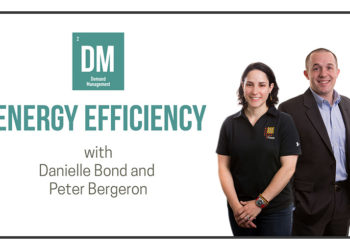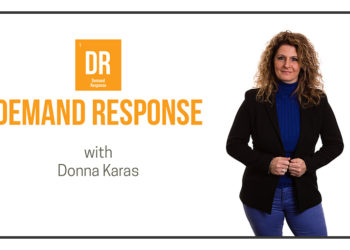A Primer for Understanding FERC Order 2222


Since being issued in September 2020, the Federal Energy Regulatory Commission’s (FERC) Order 2222 has been heralded as a landmark achievement in the history of the energy industry, one that years from now may be seen as a watershed moment when the grid took a giant leap forward in its evolution.
Before we get overwhelmed by hype and possibility, let’s take a minute to examine and clearly explain this order so your organization understands it and can use that knowledge to make an informed, educated decision on your energy use and spend.
When language matters, study the source
Language is important when it comes to interpreting and understanding energy regulations. Let us then examine FERC’s exact words concerning Order 2222 so you understand for yourself what they mean and you don’t get caught up or misled by someone else’s well-meaning and enthusiastic but perhaps not-entirely-accurate explanation of the order.
The following is verbatim from FERC,
“Order No. 2222 will help usher in the electric grid of the future and promote competition in electric markets by removing the barriers preventing distributed energy resources (DERs) from competing on a level playing field in the organized capacity, energy, and ancillary services markets run by regional grid operators.”
Order 2222 exemplifies FERC’s mission: regulate wholesale power markets
One of the Federal Energy Regulatory Commission’s primary responsibilities is to regulate the sale of electricity in the wholesale power markets, which are composed of the organized capacity, energy, and ancillary services markets that are run by the regional grid operators in the US.
To be clear, Order 2222 involves wholesale power markets, which refer to the buying and selling of power between generators and resellers. In contrast, the transaction that occurs when your organization purchases and consumes electricity takes place in the retail power market.
Order 2222 affects the wholesale power markets, NOT the retail markets.
It’s FERC’s responsibility to ensure that the competition in US wholesale power markets is just and reasonable. The markets exist to foster competition and FERC acts as essentially a referee, making sure one entity doesn’t have an unfair advantage over another.
In this respect, Order 2222 is right in the wheelhouse of FERC’s jurisdiction and mission.
Nonetheless, it is important to understand that the interconnection of DERs with the grid remains subject to local utility interconnection rules that are state jurisdictional and that these rules can encourage or discourage DER activity.
DERs are the grid’s future. Order 2222 paves a fair path forward
Until the last few years, most of the electricity entering the wholesale markets in the US originated from large traditional generation sources–coal, oil, or natural gas, for example–and was offered into the market by entities who controlled those sources, which we’ll call traditional electric resources for simplicity’s sake in this examination.
Today, however, distributed energy resources–or DERs as they’re commonly called–have become increasingly popular and have long-sought to enter the wholesale marketplace and compete alongside traditional sources.
Order 2222, as FERC clearly states, seeks to allow DERs to compete on a fair and level playing field in the wholesale power markets.
Order 2222 defines Distributed Energy Resources (for everyone)
Let’s take a moment and consider how FERC defines distributed energy resources, because this is a term that (like many in the energy industry) isn’t necessarily uniform in its definition and can mean different things to different people.
Again this language is verbatim from FERC:
“DERs are small-scale power generation or storage technologies (typically from 1 kW to 10,000 kW) that can provide an alternative to or an enhancement of the traditional electric power system. These can be located on an electric utility’s distribution system, a subsystem of the utility’s distribution system, or behind a customer meter. They may include electric storage, intermittent generation, distributed generation, demand response, energy efficiency, thermal storage or electric vehicles and their charging equipment.”
This text is worth understanding because it formally defines what has previously been nebulous and open to varying interpretations. FERC desires to create a “level playing field.”
The “level playing field” that Order 2222 seeks to create means FERC wants to make sure that assets entering the market as distributed energy resources have equal opportunity to compete against those entering the market as traditional electric resources.
If we look at FERC’s recent history of orders–including 2011’s Order 745 involving demand response resources participating in wholesale markets and 2018’s Order 841, concerning the same of storage resources–we find the Commission has been striving to establish this level playing field between traditional market participants and inevitable new players in the marketplace for some time.
What does Order 2222 do (specifically) for DERs?
At this point in our examination of Order 2222, we know FERC’s objective is to create a playing field that fosters fair competition among market participants.
Let us now take a look at the operative phrase of the order, which instructs regional grid operators to remove barriers preventing distributed energy resources (DERs) from competing on this level playing field.
A good question for us to ask now is what are these “barriers” standing in the way of DERs getting a fair shake in the wholesale markets?
The answer is complicated because the six deregulated energy markets in the US have very different rules for participation. It’s precisely those rules–or more to the point, tariffs–that Order 2222 instructs grid operators to revise, so that–again, in FERC’s words–distributed energy resources are established “as a category of market participant.”
When will we see results from Order 2222?
Back to the horse’s mouth and FERC’s wording: “Order No. 2222 takes effect 60 days after publication in the Federal Register. Grid operators must make compliance filings to FERC within 270 days of publication in the Federal Register.”
Here, we see that at the absolute earliest, the intentions of Order 2222 won’t be fully realized in the marketplace for nearly a year.
If the saga of FERC Order 841 is any indication, it will be some time before grid operators fully comply with Order 2222 and make the necessary adjustments to the tariffs that affect their markets and allow DERs the same access traditional assets have enjoyed.
It’s not unreasonable then to expect grid operators to submit appeals, file extensions (MISO, PJM, SPP, and ISO-NE have already asked for and received extensions), and otherwise take longer than 330+ days to adhere in full to FERC’s order.
On to the Future…
Order 2222 is important because it not only acknowledges the long-held conviction that DERs will play an integral role in the grid of the future, it also guarantees that in the very near future distributed energy resources such as rooftop and community solar, backup generators, fuel cells, demand response, energy storage, microgrids, and energy efficiency will take their place at the adult table in the country’s wholesale power markets.
For now, there are many ways to monetize DERs in US energy markets, especially with demand response, which pays organizations to use less energy when the grid is stressed due to lack of reliability or high electricity prices. Expect those opportunities to increase as Order 2222 is implemented.
As with all developing energy regulations, stay tuned to The Current and CPower for details as they become known.
Listen to CPower’s Director of Regulatory Affairs, Bruce Campbell, discuss FERC order 2222 and the future of distributed energy resources in the PJM market. WATCH THE VIDEO








